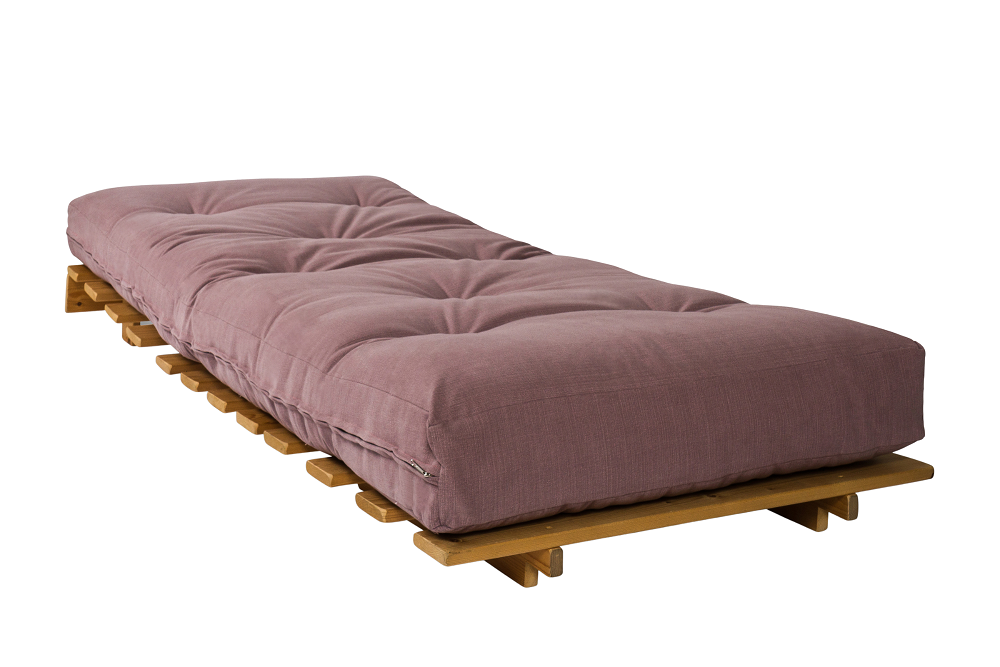Futon is a Japanese word meaning foldable mattress. Because of the way futons are made, with layered fabric fillings, they initially contain a lot of air. Your futon will always 'settle' by approximately 20% in the first few weeks of use. To take this into account our futons are much thicker than their Japanese counterparts and therefore may seem difficult to fold at first. With use, this will soon be corrected and your futon will adjust to your seating position.
To look after your futon and stop it settling unevenly, we suggest you roll the futon one way and then another, or occasionally give it a shake (a job for two people) to re-distribute the fibres. Settlement may be irregular and more noticeable if a person sits in one position on the futon constantly or a single person sleeps in the middle of a double futon. We recommend that use of a futon should be regulated across the surface to allow even settlement.
It is vital that a futon is used on a slatted frame. We do not suggest using our futons directly on the floor, as moisture can condensate under the futon. This wetness could cause mildew to form. Keep your futon a few inches off the floor on a slatted frame.
Your futon is a mattress therefore the outer cover cannot be removed. If your futon is made of natural Cotton Drill, then as with virtually all natural materials, the dye does not completely permeate the fibre. Therefore, if you rub it with a wet cloth, or put it in strong sunlight, the colour of the fabric will fade. For removal of small stains, we suggest a dry cleaning spray. The futon should be well ventilated afterwards. If your cover becomes heavily stained we sell loose covers to fit your futon.
Chenille's are made of manmade fibre and therefore the dye is more permanent and we recommend for small stains using a damp, but not wet cloth.

